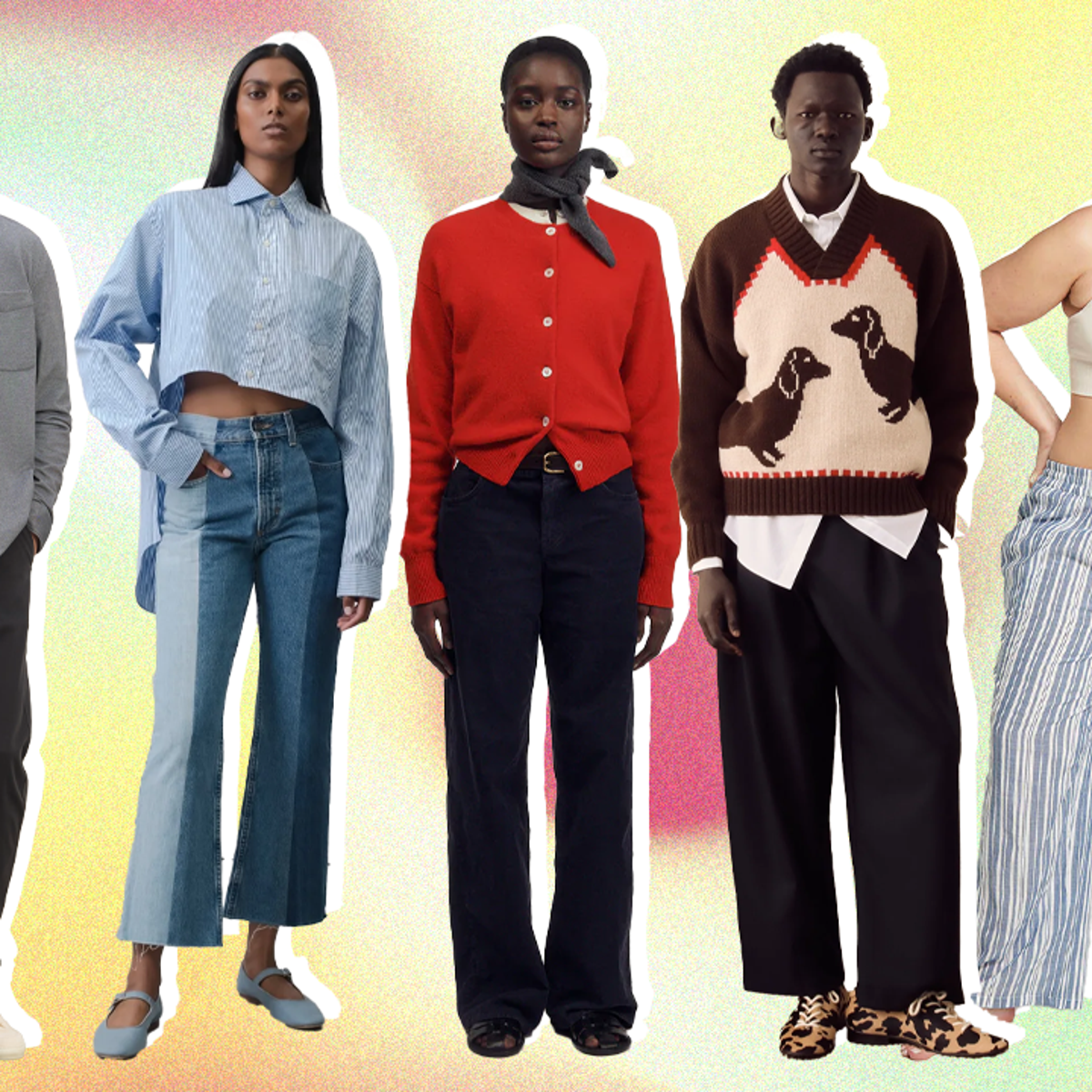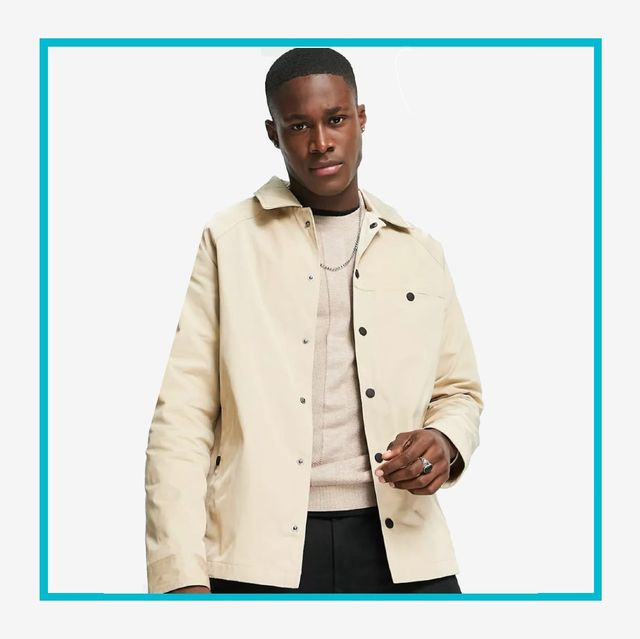The Science Behind Breathability in Branded Clothing Materials
The Science Behind Breathability in Branded Clothing Materials
Blog Article
Comprehending Apparel: The Significance of Material Options in Your Closet
The selection of material in clothing plays an essential function in both aesthetic appeals and performance. Various products provide differing levels of resilience, breathability, and comfort, straight influencing the user's experience. Understanding these nuances can boost one's wardrobe noticeably. Lots of neglect just how these choices can affect not simply individual style, however also sustainability. What textile decisions could redefine your closet and align it with both style and duty?
The Role of Fabric in Fashion and Functionality

Common Material Types and Their Features
When picking clothing, recognizing the features of common material kinds is vital for making educated options. Cotton, a widely-used natural fiber, is known for its breathability, softness, and flexibility, making it appropriate for sportswear and daily garments. Linen, one more all-natural option, boasts superb moisture-wicking buildings and a distinct appearance, ideal for cozy climates.Wool, commonly favored for its heat and sturdiness, differs in fineness; merino wool is soft against the skin, while coarser kinds are made use of for outerwear. Synthetic materials like polyester and nylon use resilience and resistance to creases, making them prominent for activewear and travel garments. Blends, which integrate artificial and all-natural fibers, can improve functionality while preserving convenience. By identifying these textile features, people can pick apparel that lines up with their lifestyle and aesthetic preferences.
Breathability and Comfort: Choosing the Right Fabrics for Various Environments
Picking the appropriate materials for various climates can substantially boost convenience and total wearability. Breathable products are crucial in hot climates, as they allow air flow and moisture dissipation. Fabrics such as cotton, bed linen, and moisture-wicking synthetics successfully attract sweat away from the body, keeping the wearer cool and dry. Conversely, in chillier climates, thicker materials like woollen or fleece give insulation while maintaining breathability, making certain warmth without overheating.Additionally, the selection of fabric weight plays a vital duty; lightweight fabrics are better for summertime, whereas larger alternatives are fit for winter season wear. Recognizing the one-of-a-kind residential properties of each fabric allows individuals to dress appropriately for varying weather. Ultimately, picking breathable and comfy fabrics customized to particular environments can substantially improve day-to-day comfort and enhance the overall experience of putting on apparel.
Resilience and Treatment: Exactly How Textile Affects Durability of Your Wardrobe
Choosing the appropriate products can significantly impact the toughness and treatment needs of a closet. Fabrics such as cotton and polyester are known for their durability and ease of upkeep, making them suitable for everyday wear. In contrast, delicate materials like silk and shoelace call for even more cautious handling and specialized cleaning techniques, which can enhance the time and effort required for care. Branded Clothing.Durability is additionally affected by the fabric's weave and coating; securely woven materials often tend to stand up to wear and tear better than freely woven choices. Furthermore, artificial blends often offer boosted longevity, integrating the very best top qualities of several fibers.Understanding the treatment guidelines for each and every textile is crucial, as incorrect drying or washing can cause premature wear. Inevitably, selecting durable materials can result in a longer-lasting wardrobe, decreasing the regularity of replacements and contributing to a more lasting style choice
The Influence of Material on Fit and Silhouette

Lasting Fabric Selections: Making Eco-Friendly Choices
The impact of fabric expands past fit and shape to include environmental variables, triggering a growing interest in sustainable fabric selections. Green textiles, such as natural cotton, hemp, and Tencel, are obtaining grip amongst customers who prioritize sustainability in their closets. These products are typically produced with fewer chemicals and water, minimizing their eco-friendly footprint.Additionally, recycled materials, made why not check here from post-consumer waste, supply a cutting-edge remedy to the fabric market's pollution issue. Brands progressively welcome transparency in their sourcing approaches, enabling customers to make educated choices regarding their purchases.Choosing lasting materials not only sustains honest practices however also urges the apparel industry to take on more responsible manufacturing techniques. As awareness of ecological issues climbs, individuals are prompted to review the lasting impact of their material choices, fostering an activity in the direction of a much more sustainable and environmentally conscious technique to fashion.
Elevating Style: Exactly How Fabric Can Transform an Outfit
While numerous might concentrate on shade and cut when selecting an attire, the option of textile plays a vital role in raising style and enhancing total look. Different materials share unique state of minds and messages; as an example, silk exudes deluxe and sophistication, while jeans offers an informal, loosened up ambiance. The appearance and drape of a material can significantly modify the silhouette, with organized fabrics supplying a refined look and softer ones creating a more fluid, unwinded aesthetic.Moreover, the weight of the fabric influences wearability throughout periods. Light-weight textiles like bed linen and cotton are ideal for summertime, while heavier materials such as woollen and velour provide warmth and elegance in cooler months. Comprehending fabric homes, such as breathability and stretch, also equips individuals to make educated choices that boost convenience without jeopardizing design. Ultimately, the appropriate textile can change a clothing from normal to extraordinary, making it an important consideration in any type of closet.
Frequently Asked Questions
How Do I Identify the Fabric Material of My Clothing?
To determine fabric content, one can analyze care tags, conduct melt examinations for fiber recognition, or seek advice from textile examples. These techniques assist separate materials, ensuring notified selections for clothes treatment and maintenance in daily wear.
Can Material Choice Affect My State Of Mind or Confidence?
Material option can substantially impact a person's mood and confidence. Branded Clothing. Particular products may stimulate sensations of convenience or style, while others can feel unflattering or limiting, eventually influencing self-perception and emotional well-being throughout the day
What Fabrics Are Best for Delicate Skin?
For individuals with delicate skin, natural fabrics like bed linen, cotton, and bamboo are typically recommended. These products are breathable, hypoallergenic, and less most likely to cause irritation, making them ideal choices for convenience and skin health.
Exactly how Do I Properly Wash and Care for Various Fabrics?
To correctly clean and care for different textiles, one must consider each product's certain demands, including temperature settings, detergents, and drying out approaches, ensuring long life and maintaining the material's original top qualities for optimal usage.
Are There Particular Fabrics for Athletic or Performance Put On?
Sports or performance wear usually utilizes materials such as polyester, spandex, and nylon. These materials are developed for moisture-wicking, breathability, and versatility, enhancing movement and convenience throughout physical activities while providing sturdiness and assistance. Conversely, in cooler climates, thicker textiles like woollen or fleece offer insulation while retaining breathability, making certain heat without overheating.Additionally, the choice of material weight plays a vital duty; light-weight materials are more suitable for summer season, whereas much heavier alternatives are fit for winter wear. In contrast, fragile materials like silk and lace need even more careful handling and specialized cleaning methods, which can boost the time and initiative needed for care.Durability is also influenced by the material's weave and finish; tightly woven textiles have a tendency to stand up to wear and tear better than freely woven alternatives. In comparison, rigid fabrics can restrict movement however provide a classic, sleek look.Moreover, the thickness and appearance of the textile try this web-site can affect the aesthetic assumption of body form. The influence of fabric extends beyond fit and shape to include environmental factors, triggering a growing interest in lasting textile choices. The structure more tips here and drape of a fabric can drastically alter the shape, with structured textiles supplying a sleek look and softer ones producing an extra fluid, unwinded aesthetic.Moreover, the weight of the textile influences wearability across seasons.
Report this page